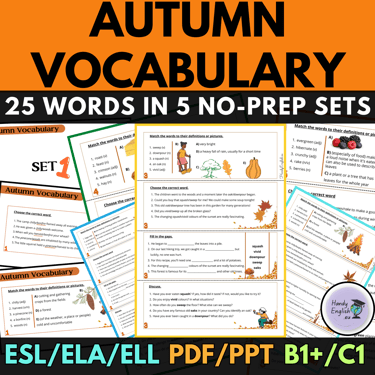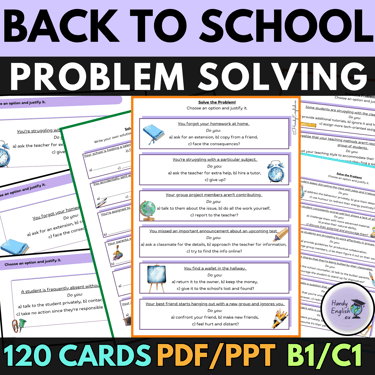[BLOG] Teaching Abroad: A Teacher’s Survival Guide #4: Dealing with Language Barriers as a Teacher
This blog post explores practical strategies for overcoming language barriers in the ESL classroom. From using visuals and technology to creating a safe, supportive environment, it offers tips to help teachers connect with students and foster communication. Perfect for educators seeking resourceful and compassionate approaches to teaching multilingual groups.
Kaya
1/1/2025
Please keep in mind that the opinions posted on this blog are my own.
Everybody might have a different experience and opinions, and that's OK.
Teaching is challenging enough without the added complexity of language barriers. As ESL teachers, we’ve all faced that moment of confusion when our students don’t understand, or worse, when we can’t figure out how to make them understand. Let’s break down how to handle language barriers without losing your mind—or your students’ attention.
Understanding the Root of Language Barriers
First things first, not all language barriers are created equal. Sometimes, the issue is a lack of vocabulary or grammar knowledge. Other times, it’s cultural differences or even anxiety about making mistakes. As teachers, we need to dig deeper to figure out what’s really causing the problem.
Start by observing your students. Are they struggling with specific tasks or avoiding communication altogether? Are they trying but just missing the mark? Knowing whether it’s confidence, skills, or something else entirely will help you decide the best way forward.
Keep It Simple and Visual
When words fail, visuals are your best friend. Gestures, pictures, videos, diagrams—anything that can support your explanation is worth a try. For instance, when teaching new vocabulary, show a picture or act it out. Don’t underestimate the power of body language; it’s often a universal language in itself.
Avoid using overly complicated language when giving instructions. Even if your students are adults, breaking down your speech into manageable chunks can make all the difference. Think: “Open your books. Page 45. Exercise 3,” instead of rattling off a long sentence that might leave them confused.
Encourage Communication Without Fear
One of the biggest hurdles is often students’ fear of making mistakes. Adults, in particular, can be self-conscious about speaking in a new language, which can create a wall between you and them. Your job? Smash that wall.
Create an environment where mistakes are part of the learning process. Celebrate effort over perfection. You might say, “That was a great try! Let’s tweak it a little,” instead of focusing on what went wrong. When students feel safe, they’re more likely to take risks—and risks lead to progress.
Learn a Little of Their Language
This one might sound counterintuitive, but it works. Picking up even a few basic phrases in your students’ native language shows respect and builds rapport. It’s not about becoming fluent—it’s about showing empathy.
Imagine you’re teaching a group of Spanish-speaking students. Greeting them with a simple “Buenos días” or acknowledging their effort with “Muy bien” can go a long way in breaking the ice. It also helps you understand some of the common pitfalls they face when learning English, which makes you a more effective teacher.
Use Technology to Bridge Gaps
In today’s world, we’ve got a treasure trove of tools to help tackle language barriers. Translation apps, language-learning platforms, and interactive online resources can supplement your lessons.
For example, apps like Google Translate can help with quick clarifications, while platforms like Quizlet can make vocabulary practice more engaging. Just remember: technology is a tool, not a replacement for good teaching.
Be Patient and Flexible
Finally, patience is key. Language barriers won’t disappear overnight, but with consistency and effort, you’ll see progress. Be ready to adjust your methods based on what works for your students. Sometimes, what seems like a foolproof plan will flop, and that’s okay.
Remember that your attitude sets the tone for the classroom. If you’re frustrated, your students will pick up on it. Stay positive, keep trying new strategies, and remind yourself that every little breakthrough counts.
Dealing with language barriers isn’t about being perfect—it’s about being resourceful and compassionate. At the end of the day, your students will remember how you made them feel more than any specific lesson you taught. Celebrate the small wins, and keep building on them.
Language might be a barrier, but it’s also a bridge. And as their teacher, you’re the architect. Keep building, one step at a time.






Get in touch!
Copyright Handy English 2021
”I used this with an adult ELL tutee of mine. I appreciate that the language was accessible for multiple proficiency levels, but the content wasn't obviously geared for children and still useful for older learners.”
August 7, 2023
”Another great resource from Handy English! I used it to give my students more in-depth practise into quantifiers and restaurant language. It's great resource and can be used after the students learn the basics of language for the restaurants and quantifiers. Definitely helped solidify what they learnt.”
February 5, 2023
”Love this resource. Great for fast finishers and also those in small ESL groups. Great for all macro skills as discussion and brainstorming is a great precursor for writing submissions.”
- Gail M.
June 25, 2023
Here's what other ESL Teachers say
Handy English: 4.8/5
”This was a wonderful resource for my students. It helped me introduce them easily to new concepts and it was quite engaging. Thanks!”
- Kiara B.
October 10, 2023
”Great resource for learning vocabulary, which supports comprehension and speaking skills.”
- Lori-Ann W.
September 29, 2023
”What a great way to get a healthy debate going. My students struggle with impulse control and they all have kept it kind and appropriate.”
- Alicia H.
September 17, 2023






